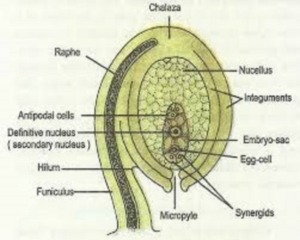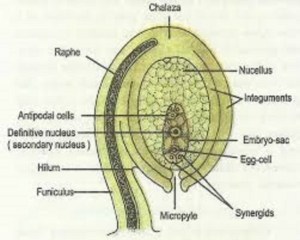#adventive embryony
Text
Apomixis - Flowering Plants
Apomixis – Flowering Plants

[wp_ad_camp_1] APOMIXIS IN FLOWERING PLANTS Reproduction in plants is of two types: Sexual or Amphimixis Asexual or Apomixis Angiosperms have a Diplontic life cycle. The main part of the lifecycle is Sporophyte & the Gametophyte is reduced. APOMIXIS Apomixis mimics sexual reproduction but produces seeds without fertilization. Seen in some species of Family Asteraceae & Grasses. It is of 3…
View On WordPress
#adventive embryony#aiims#aiims 2018#aipmt#apogamy#apomixis#apomixis for neet#apospory#asexual reproduction in flowering plants#biology#biology mcqs#biology mnemonic#biology mnemonics#diplospory#MCAT Biology#MCQs#NEET 2018#neet biology#NEET MCQs#neet mnemonics#NEET question paper#NEET questions#neet ug#parthenogenesis#polyembryony#Premed#premed biology#Reproduction in flowering plants#sporophytic budding
0 notes
Text
Reproduction in flowering plant | MCQ
Reproduction in flowering plant | MCQ
Pollen embryoids were discovered by
(a) Guha and Maheshwari (b) Steward and White
(c) Konar and Natraja (d) Nitsch and Skoog
The embryo may arise either from egg or some other cell of gametophyte in
(a) Vegetative reproduction
(b) Recurrent apomixis
(c) Non-recurrent reproduction
(d) Adventive embryony
Poly ethylene glycol (PEG) is used in
(a) Protoplast…
View On WordPress
0 notes
Photo

New Post has been published on https://ramneetkaur.com/apomixis-flowering-plants/
Apomixis - Flowering Plants

(adsbygoogle = window.adsbygoogle || []).push();
APOMIXIS IN FLOWERING PLANTS
Reproduction in plants is of two types:
Sexual or Amphimixis
Asexual or Apomixis
Angiosperms have a Diplontic life cycle. The main part of the lifecycle is Sporophyte & the Gametophyte is reduced.
APOMIXIS
Apomixis mimics sexual reproduction but produces seeds without fertilization. Seen in some species of Family Asteraceae & Grasses.
It is of 3 types:
Apogamy: Formation of sporophyte/embryo from any cell of the gametophyte/embryo sac without fertilization. Cells of the embryo sac i.e., antipodal cells or the synergids. The embryo formed is haploid.
Apospory: Formation of gametophyte i.e., the embryo sac from any cell of the sporophyte without meiosis. Cells of the sporophyte are cells of nucellus & integuments. The embryo sac formed has diploid cells. The egg is also diploid. Diploid egg either undergo fertilization or undergoes Parthenogenesis.
Parthenogenesis: Formation of the embryo from the egg without fertilization.

Apomixis can be divided into different types according to occurrence:
Non-Recurrent: The plant produced due to apomixis is unable to reproduce further.
Seen in the case of:
Haploid Parthenogenesis: Development of embryo from the egg without fertilization. The egg formed is haploid.
Apogamy.
(adsbygoogle = window.adsbygoogle || []).push();
2. Recurrent: The plant produced due to apomixis can reproduce further.
Seen in the case of:
Diplospory: The megaspore mother cell forms embryo sac without meiosis. The egg formed is diploid.
Apospory.
3. Adventive embryony: Also referred as Sporophytic budding. The embryo is formed from the cells of nucellus or integuments. Examples are Mango, Citrus, Opuntia. Due to this Polyembryony occurs.
POLYEMBRYONY
Polyembryony is the formation of many embryos in the seed.
Adventive Polyembryony is the formation of many embryos in the embryo sac from the cells of integuments and nucellus.
Cleavage Polyembryony is the formation of many embryos due to division in the zygote. Seen in Gymnosperms.
Simple Polyembryony is the formation of many embryos due to fertilization of many eggs. Seen in Grasses.
ALSO WATCH: Apomixis in Flowering Plants
(adsbygoogle = window.adsbygoogle || []).push();
#adventive embryony#aiims#aiims 2018#aipmt#apogamy#apomixis#apomixis for neet#apospory#asexual reproduction in flowering plants#biology#biology mcqs#biology mnemonic#biology mnemonics#diplospory#MCAT Biology#MCQs#NEET 2018#neet biology#NEET MCQs#neet mnemonics#NEET question paper#NEET questions#neet ug#parthenogenesis#polyembryony#Premed#premed biology#Reproduction in flowering plants#sporophytic budding#Reproduction in Flowering Plants
0 notes